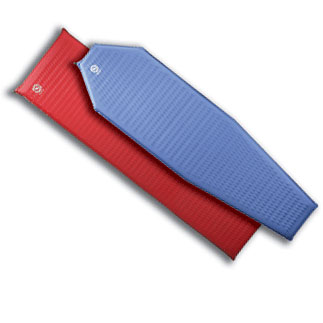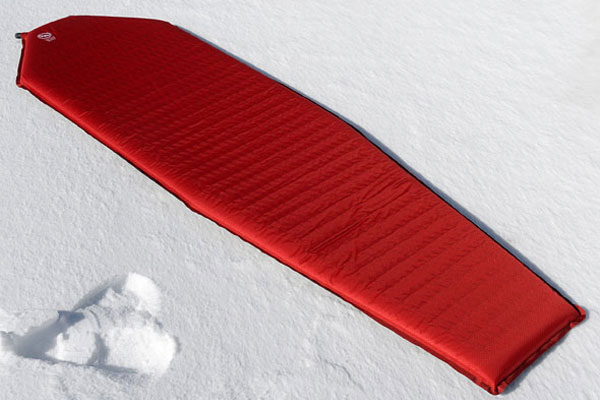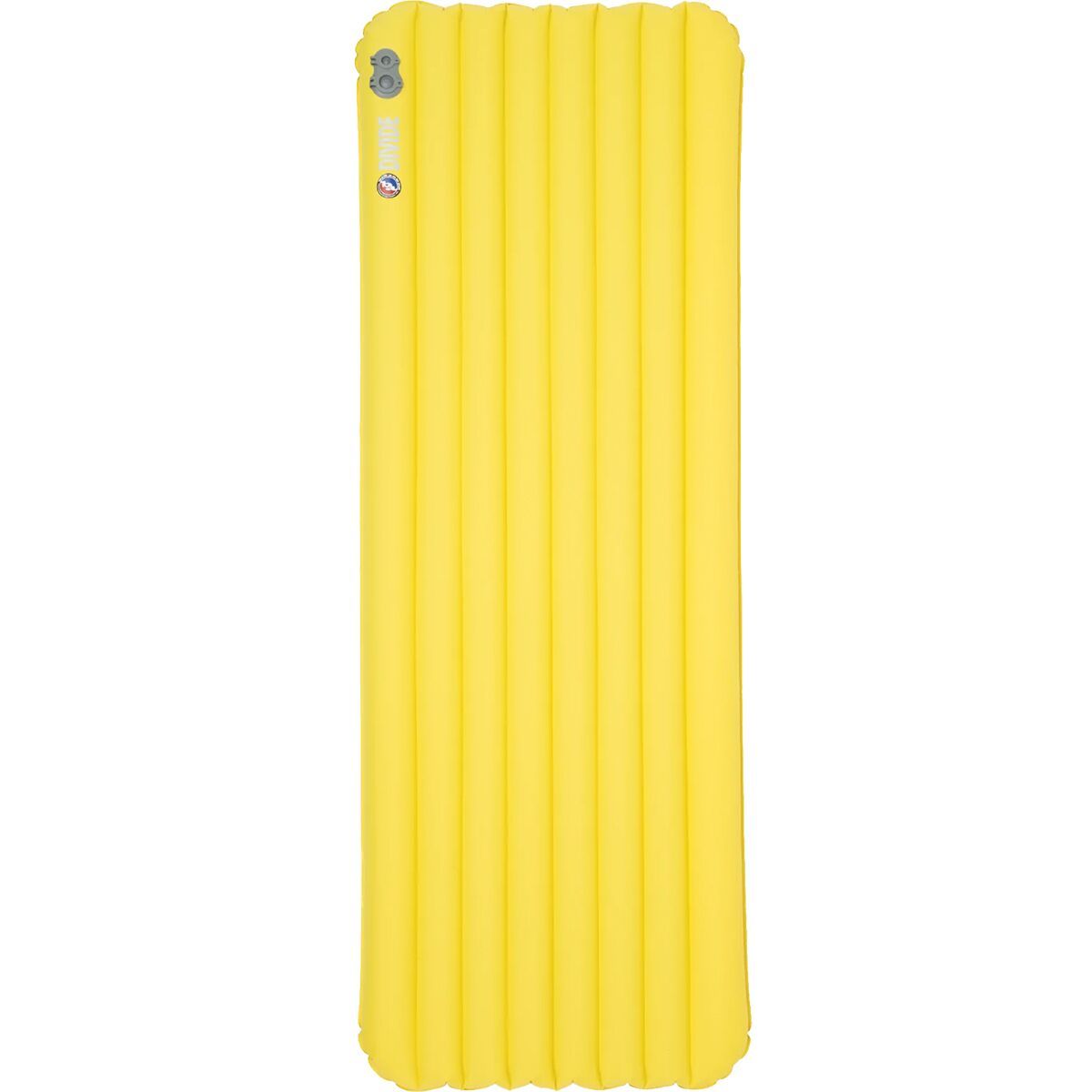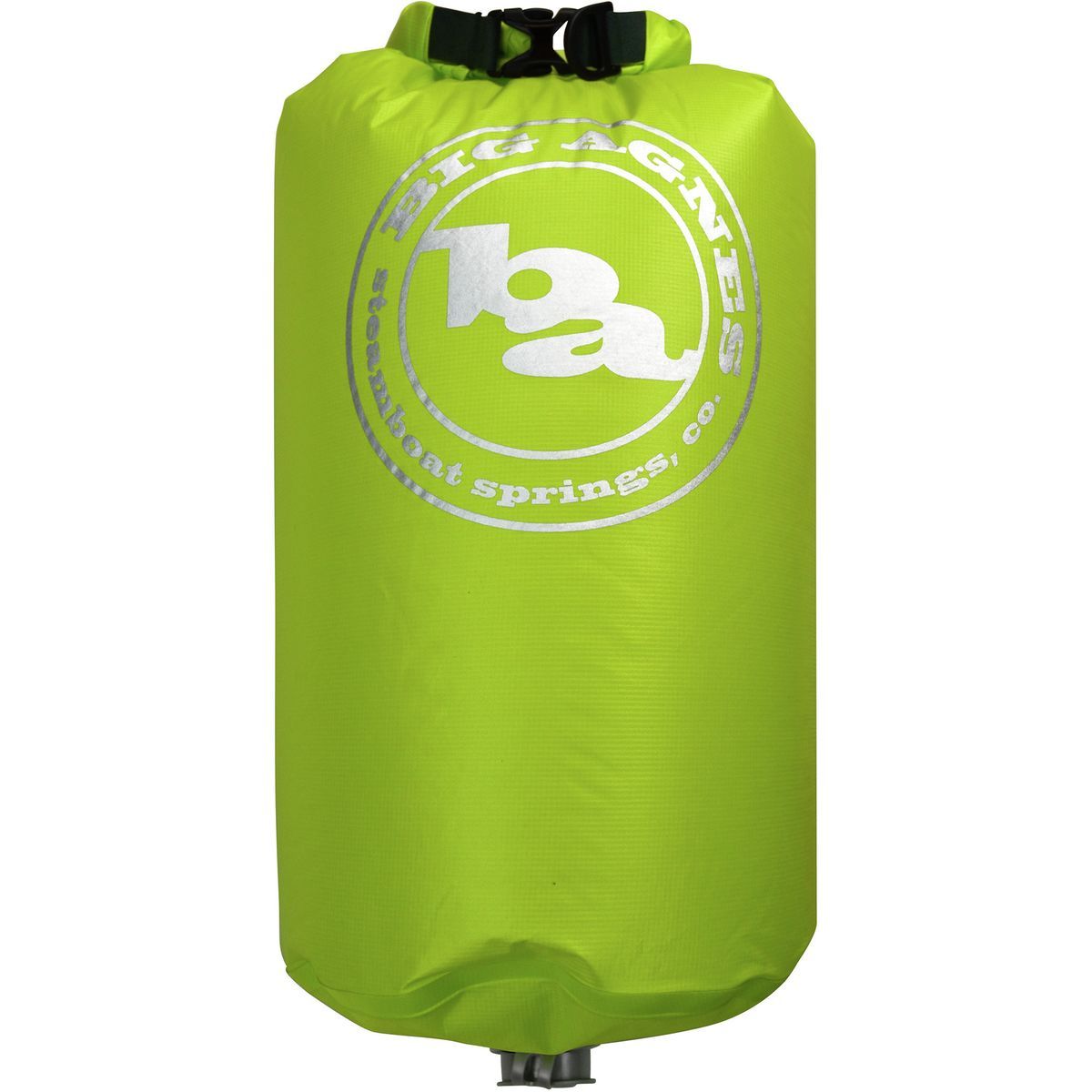Big Agnes Two Track

- air + foam insulation
- higher r-factor
- winter camping
- 2lbs 4oz
In its two-inch version, the Big Agnes Two Track self-inflating sleeping pad offers a very warm advertised r-value of 6.5.
To put that number in perspective, Thermarest's equivalent winter pad, the ProLite Plus, is rated considerably lower, with an insulation value of 3.8. Exactly how objective those numbers are (and thus how valid the comparison) is open to debate, but it seems clear that the Big Agnes Two Track offers the highest practical insulating value for winter mountaineers seeking a one-pad solution to sleeping on snow.

The Two Track is available in two shapes and two thicknesses: rectangular versus mummy cut, and 1.5 versus 2 inches.
The mummy cut saves weight by trimming away extra material, though of course you won't able to roll around as much in your sleep.
The most bang for the buck is the 2" Two Track in the mummy cut, which is rated to -25°F. The 1.5" pad (with an r-value of 4.5) is rated to 0°. Both versions of the Two Track come in two lengths: 72" (regular) and 78" (long). These many permutations give you the ability to choose the shape, length, and thickness that will best suit your needs.
Most winter mountaineers will probably choose the mummy cut, because it's lighter and less bulky when rolled. As for thickness, the 1.5" looks like the more tempting option, as it saves six ounces (30 ounces total in the regular length) but still easily bests the insulating value of a Thermarest Prolite Plus.
The Two Track's impressive insulating effectiveness comes first of all from the pad's thickness, and second by the addition of a high-density foam core. The foam core in particular gives the pad a welcome boost in warmth versus other inflatable pads.
The promise of these high r-values is the ability to sleep directly on snow without necessarily adding a closed-cell foam pad underneath. Note that there are advantages and disadvantages to both approaches. If you do bring a separate foam pad, you can trim it down so that it just barely covers your body core. A thin strip of foam like this will add hardly any extra weight to your load, and will also prove handy around camp whenever you need to sit on snow (while cooking dinner, for example).
On the other hand, bringing along any extra gear adds bulk to your load, and requires you to keep track of one more thing. The simplicity of just bringing one pad can be highly appealing.
I find that the 2" Two Track does add quite a bit of insulating value over a Thermarest Prolite 4. In my experience, the Prolite 4 is just barely adequate for sleep-on-snow comfort. The Two Track is better...but I'd still double it with an extra foam pad in winter.
Compared to the Prolite, the Two Track makes for a softer bed—the pad is not as stiff, which is either good or bad depending on your mattress preferences. I prefer the textured upper surface of the Prolite, which helps keep you from slipping off. But really, the critical factor in choosing the Two Track versus the Prolite lies in deciding whether or not you need that extra insulation.
The Two Track's weight premium over the Prolite 4 is considerable, especially in the 2" version. If those extra ounces don't bother you, by all means go for the Two Track in cold weather. On the other hand, fast-and-light mountaineers will probably prefer the Thermarest Prolite series (or the newer, lighter Neo pads), supplementing as needed with extra foam.

Big Agnes Divide Sleeping Pad One
$99.95 at Backcountry.com
Big Agnes Pumphouse Ultra Pad Pump
$39.95 at Backcountry.com
Big Agnes Divide Sleeping Pad
$99.95 at OMCgear
Big Agnes Campmeister Deluxe
$269.95 at OMCgearBig Agnes Rapide SL Insulated Tent
$319.95 at REI.comBig Agnes Rapide SL Insulated
$159.95 at REI.com


 Thermarest Neoair XLite
Thermarest Neoair XLite Exped Sim Comfort 10 DLX
Exped Sim Comfort 10 DLX Thermarest DreamTime
Thermarest DreamTime Big Agnes Two Track
Big Agnes Two Track Thermarest Ridgerest
Thermarest Ridgerest Thermarest Prolite
Thermarest Prolite